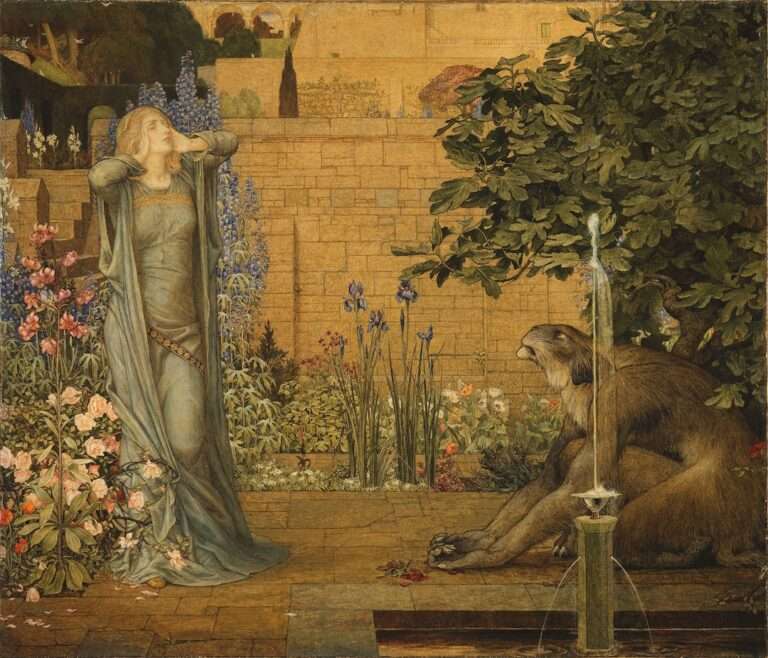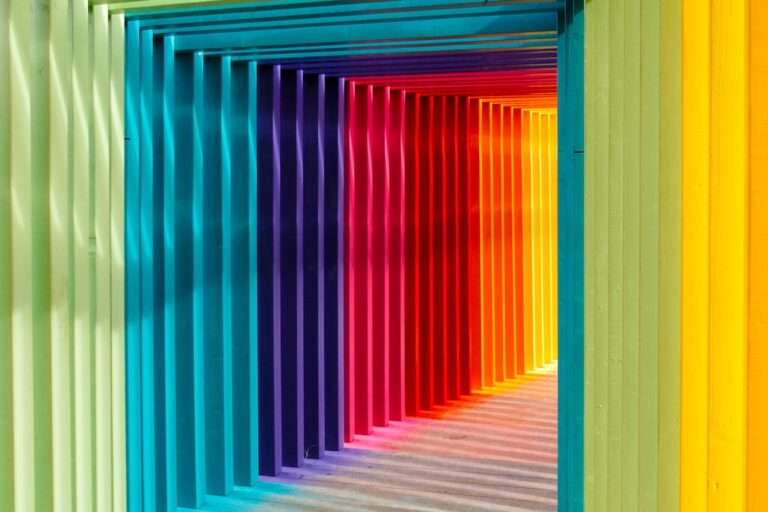Exploring the Deeper Meanings of Beige Symbolism

Beige, a color often associated with neutrality and simplicity, has a significant presence in various fields such as art, design, fashion, advertising, architecture, nature, culture, literature, and even politics. Despite its understated nature, beige holds a unique place in the world of colors. In this article, we will explore the history of beige, its psychological impact on emotions and mood, its role in art and design, fashion, advertising, architecture, nature, culture, literature, and politics.
The History of Beige: From Humble Origins to Modern Symbolism
The origins of the color beige can be traced back to ancient times. The word “beige” itself is derived from the French word for natural wool that has not been dyed. It was initially used to describe the color of undyed wool or fabric. In ancient civilizations such as Egypt and Mesopotamia, beige was a common color used in clothing and textiles due to its natural and earthy tone.
Throughout history, beige has evolved in art and design. In the Renaissance period, beige was often used as a background color in paintings to create a sense of depth and contrast. It was also used in architectural designs to create a harmonious balance between different elements. In the modern era, beige has become synonymous with minimalism and contemporary aesthetics. Its neutral and calming qualities make it a popular choice for interior design and furniture.
The Psychology of Beige: Understanding its Impact on Emotions and Mood
Beige has a unique psychological impact on emotions and mood. As a neutral color, it can evoke different emotions depending on the context and individual perception. Beige is often associated with calmness, simplicity, and relaxation. It has a soothing effect on the human psyche and can create a sense of tranquility in a space.
However, beige can also be perceived as dull or boring if not used effectively. It is important to consider the lighting, texture, and other elements when incorporating beige into a design or space. By combining beige with other colors or textures, it can create a more dynamic and interesting environment.
Beige in Art and Design: Its Role in Minimalism and Contemporary Aesthetics
Beige plays a significant role in minimalist art and design. Minimalism is characterized by simplicity, clean lines, and a focus on essential elements. Beige, with its neutral and understated nature, is often used as a base color in minimalist artworks and designs. It allows the focus to be on the form, shape, and composition of the piece.
In contemporary aesthetics, beige is often used to create a sense of calmness and serenity. It is commonly seen in interior design, where it is used for walls, furniture, and accessories. Beige creates a warm and inviting atmosphere, making it a popular choice for residential spaces.
Beige in Fashion: A Classic Color or a Sign of Conformity?
Beige has a long history in fashion. It has been associated with elegance, sophistication, and timelessness. In the early 20th century, beige was popularized by fashion icons such as Coco Chanel, who introduced the iconic beige suit. Beige became synonymous with classic style and effortless chic.
However, there has been a debate over whether beige is a classic color or a sign of conformity. Some argue that beige can be seen as a safe choice that lacks creativity and individuality. Others believe that beige can be styled in unique ways to express personal style and creativity.
Beige in Advertising: How Brands Use the Color to Convey Messages and Values

Brands often use beige in advertising to convey messages and values. Beige is often associated with reliability, trustworthiness, and simplicity. It can create a sense of familiarity and comfort for consumers.
For example, many tech companies use beige in their branding to convey a sense of reliability and simplicity. Beige is often used in the packaging and design of products to create a sense of trust and quality.
Beige in Architecture: Its Use in Creating Calm and Serene Spaces
Beige is commonly used in architecture to create calm and serene spaces. It is often used for walls, floors, and ceilings to create a neutral backdrop that allows other elements to stand out. Beige can create a sense of balance and harmony in a space, making it a popular choice for residential and commercial buildings.
For example, many spas and wellness centers use beige in their interior design to create a calming and relaxing environment. Beige is often combined with natural materials such as wood and stone to create a sense of warmth and tranquility.
Beige in Nature: The Natural World’s Fascination with the Color
Beige is prevalent in nature, especially in the desert landscapes. It is often seen in sand dunes, rock formations, and dry grasslands. Beige blends seamlessly with the natural environment, allowing animals and plants to camouflage and adapt to their surroundings.
In the animal kingdom, many species have evolved to have beige or sandy-colored fur or feathers to blend in with their environment. This helps them hide from predators or sneak up on prey. Similarly, many plants have beige or brown tones to blend in with the soil or rocks.
Beige in Culture: Its Significance in Different Regions and Societies
Beige holds cultural significance in different regions and societies. In some cultures, beige is associated with purity, simplicity, and spirituality. In others, it may symbolize mourning or humility.
For example, in Japanese culture, beige is associated with simplicity and elegance. It is often used in traditional tea ceremonies and Zen gardens to create a sense of tranquility and harmony.
Beige in Literature: Its Symbolic Meanings in Fiction and Poetry
In literature, beige is often used symbolically to represent neutrality, simplicity, or a lack of emotion. It can be used to describe a character or a setting that lacks vibrancy or excitement.
For example, in F. Scott Fitzgerald’s novel “The Great Gatsby,” the character of Daisy Buchanan is often described as having beige or pale colors associated with her. This represents her lack of depth and emotional complexity.
Beige in Politics: How the Color is Used to Convey Political Messages and Ideologies
Beige is often used in politics to convey political messages and ideologies. It can be used to represent neutrality, compromise, or a lack of strong opinions.
For example, in political debates or discussions, politicians may use beige language or arguments to avoid taking a strong stance on an issue. This can be seen as a way to appeal to a wider audience and avoid controversy.
In conclusion, beige holds a significant place in various fields such as art, design, fashion, advertising, architecture, nature, culture, literature, and politics. Its neutral and calming qualities make it a popular choice for creating serene and harmonious spaces. Whether it is used in minimalist art and design, fashion, advertising campaigns, or architectural designs, beige has the power to evoke different emotions and convey different messages. Despite its understated nature, beige continues to fascinate and inspire in various aspects of our lives.
If you’re interested in exploring the symbolism of colors, you might also enjoy reading about the symbolism of a snake. Snakes have long been associated with various meanings and interpretations across different cultures and religions. To delve deeper into this intriguing topic, check out this fascinating article on the Symbolism Hub website: Symbolism of a Snake. Discover the hidden messages and symbolic representations behind these enigmatic creatures.
FAQs
What is Beige Symbolism?
Beige Symbolism is the use of the color beige to represent certain ideas, emotions, or concepts in art, literature, and other forms of expression.
What does the color beige symbolize?
Beige is often associated with neutrality, calmness, and simplicity. It can also represent warmth, comfort, and stability.
What are some examples of Beige Symbolism in art?
Some examples of Beige Symbolism in art include the use of beige backgrounds or clothing to represent calmness or simplicity, or the use of beige tones in a painting to create a warm and comforting atmosphere.
What are some examples of Beige Symbolism in literature?
In literature, beige may be used to represent a character’s neutrality or lack of emotion, or to create a sense of calmness or stability in a setting.
Is Beige Symbolism a widely recognized concept?
While Beige Symbolism may not be as well-known as other forms of color symbolism, it is still a recognized concept in the world of art and literature.
Can Beige Symbolism be used in branding or marketing?
Yes, Beige Symbolism can be used in branding or marketing to convey a sense of simplicity, calmness, or stability. However, it may not be as effective as other colors in terms of catching the viewer’s attention.





